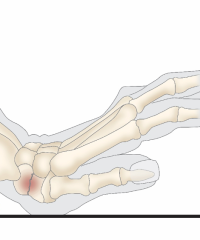About weightlifting and hand injuries
Recent posts
Do you have any doubt?
My goal is to help them regain not only function, but also the quality of life they deserve. If you are experiencing pain, movement limitations or injuries to your hands, I am here to offer you my experience in the field. Together, we can chart a path to recovery and restoration of vitality to your hands.
Categories
Injuries to the hands and wrists represent between 3% to 9% of injuries in athletes, a percentage that has been increasing in recent years since sports and its various benefits have become a lifestyle boom around the world.
According to studies, in a country like the United States, between 2006 and 2008, about 37 to 45 million people performed exercises or activities of weightlifting with free weight or with machines, so that each year, in that country, there were around 25 thousand injuries that represent an average of more than 9 thousand annual visits to the emergency room, produced by an inadequate training or by a bad movement due to poor technique in posture.
Types of injuries and their causes
Injuries that occur in the hand or wrist when performing, precisely, exercises with free weights or with machines, are mostly associated with an inadequate technique, fatigue, overload or weight drop, the latter being the most common with a percentage of 65.5%, while an inadequate technique represent 31% of chronic injuries. Fatigue and overload are generally associated with the athlete’s short time of rest or recovery between exercises.
Thus, those athletes who periodically exercise with weights, have a high proportion of ailments in the hands; one of these is tendinopathy, a general term used for both tendinitis and tendinosis. While tendinitis involves inflammation of the tendon, tendinosis describes a sore tendon that is degenerated from several problems in the tissue itself.
Tendinopathy can present, among other factors, due to an overuse of the tendon, pain, edema and a lower tolerance and functionality of the limb to the action of lifting loads. Therefore, it is recommended, as a first treatment of the ailment, the use of anti-inflammatory drugs, physical therapy, local heat or infiltrations.

Recommendations for people over 55
People over 55 have a higher percentage of injuries with machines with a 18.2%, while younger people have a 9.3%; Therefore, athletes over 55 years must know their limitations and capacities when lifting weights and have a sound knowledge of the proper use of machines.
In addition, it is recommended to start with lighter weights and gradually increase them. It is recommended that they work with a professional in the field, who creates and designs a safe and specialized training program, according to their age and abilities.
At this point it is important to remember that at a certain age it is no longer recommended to perform certain exercises that were performed easily with 20 or 30 years old, since the capacities and conditions of the body are different, hence the importance of a good warm-up of the hands and wrists to condition the body.
Recommendations during exercises with weights
- Know the technique: Know the technique very well before carrying out the activity, since an incorrect technique of lifting weights can cause sprains, strains, fractures and other painful injuries.
- Warming up: Cold muscles are more likely to be injured than warm muscles. Before lifting weights, your hands, wrists and ankles should be warmed up for 5 to 10 minutes, and this should be a routine that must be carried out constantly before carrying out any type of exercise or activity.
- Having the correct body posture: When lifting weights, the full range of joint movements should be used. The better the exercises are performed, the better the results and the less likelihood of injury. Maintaining a proper body shape posture, even when weights are picked up or replaced.
- Lifting the right weight: Lift a weight that can be done in a series of 12 to 15 repetitions. As strength and routine is gained, there could be a gradual increase of the amount of weights.
- Wear gloves: Gloves offer a more comfortable grip, avoiding the appearance of discomfort in the hands or pain from the pressure of the weights. They also prevent a slip of the hands from sweat, giving a firmer grip.
- Don’t push yourself too hard: For most people, completing a series of exercises until fatigue is usually enough. Additional sets can take longer and cause injuries from overload. However, the number of sets you do may vary depending on your exercise goals.
- Pain as an alert: If an exercise causes pain, it should be stopped. It is recommended to try to do the exercise a few days later and with less weight.
- Get advice from a professional: It is important to consult a professional on the subject, who can create a safe training program based on age and abilities. If you are not sure if you are doing an exercise well, it is important to ask a personal trainer or another specialist for help.


















